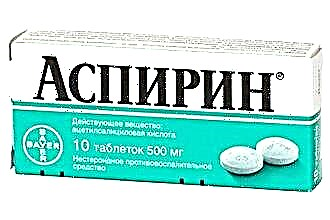One of the most common ENT diseases is angina. It is especially common in children and adolescents, in adults and the elderly it is diagnosed much less often. It is possible to recognize this insidious ailment from the very first day, especially if it proceeds in a chronic form. However, there is also chronic tonsillitis, the symptoms of which can be somewhat blurred.
Features of a chronic disease
 In almost all cases, the cause of the chronic form of tonsillitis is not completely cured acute form of the disease. At the very beginning, angina manifests itself very clearly, it is difficult to confuse it with other diseases. The patient feels the following symptoms:
In almost all cases, the cause of the chronic form of tonsillitis is not completely cured acute form of the disease. At the very beginning, angina manifests itself very clearly, it is difficult to confuse it with other diseases. The patient feels the following symptoms:
- headache;
- body aches;
- an increase in body temperature up to 40 ° C and above;
- chills;
- dry mouth and throat;
- severe pain when swallowing and when talking.
During a personal examination of the patient, the doctor also sees obvious symptoms of angina. The palatine tonsils become inflamed and increase in size, they can be covered with pits with purulent contents or white bloom. The lymph nodes in the neck and in the occipital area increase in size and become painful, they are palpable on palpation. When taking a blood test, it can be revealed that the number of leukocytes is increased, this indicates the presence of a bacterial infection in the body.
After laboratory studies of a smear from the throat, it becomes clear what triggered the disease: viruses, fungi or bacteria.
If acute tonsillitis is not treated at all or is done incorrectly, it quickly becomes chronic. The disease can recur at different rates, depending on the stage:
- the compensated stage is characterized by infrequent relapses;
- decompensated - characterized by a short remission and exacerbations, which the patient suffers rather hard.
Differences between acute and chronic forms
Angina appears for the first time due to the fact that pathogenic bacteria attack the tonsils from the outside. Close contact with an infected person or the use of his personal belongings can lead to this condition. Also, the violation is transmitted by airborne droplets.
With proper treatment, the infection is completely eliminated from the surface of the tonsils and the body.
 However, if the patient has not completed therapy completely, the manifestation of a chronic form of the disease is possible. With it, the tonsils themselves become the focus of infection - the pathogenic microflora constantly lives in them, but is activated only under certain conditions. In this case, we can talk about self-infection. Such factors can provoke it:
However, if the patient has not completed therapy completely, the manifestation of a chronic form of the disease is possible. With it, the tonsils themselves become the focus of infection - the pathogenic microflora constantly lives in them, but is activated only under certain conditions. In this case, we can talk about self-infection. Such factors can provoke it:
- bad ecology;
- allergy;
- the presence of infectious diseases in nearby organs;
- violation of nasal breathing (polyps in the nose, abnormal structure of the septum and other parts of the organ);
- general and local hypothermia;
- smoking and drinking alcohol;
- drop in immunity;
- stress.
How to recognize a chronic form
The signs of chronic tonsillitis are not easy to recognize immediately. The patient himself may feel only slight deterioration in his condition, especially when it comes to the compensated stage of the disease. At the same time, the temperature remains normal, it does not rise above subfebrile, the pain syndrome is not strongly felt during an exacerbation, and during the period of remission there are no complaints at all. This means that the infection is sluggish, it does not go away, but the tonsils do not allow it to spread further.
However, in the decompensated stage, everything is much more complicated. Exacerbations happen very often, they make themselves felt with the following symptoms:
- severe sore throat when swallowing;
- a sharp increase in body temperature;
- a feeling of dryness and tightness in the throat, a constant desire to wet it;
- coughing without sputum discharge;
- bad breath, which appears due to the multiplication of bacteria;
- sleep disorder;
- decreased ability to work, fatigue;
- loss of appetite;
- thirst.
When a patient comes to the doctor with suspicions of chronic tonsillitis in a decompensated stage, it is not difficult to make sure of the diagnosis. The color of the mucous membranes will be bright and glossy. The tonsils themselves will be enlarged, and depressions with white or yellowish contents may appear on them.
Tonsils are loose, local lymph nodes increase during an exacerbation, and when palpated, the patient feels pain. Laboratory tests confirm the presence of an infection and determine its type.
Manifestation of the disease in children
The symptoms of chronic tonsillitis in adults are much less pronounced than in children. It is especially difficult for babies to endure a relapse; in severe cases, their hospitalization is indicated for treatment under the close supervision of doctors. Fears should cause such manifestations of the disease:
- Plugs in gaps. The baby's glands are covered with potholes, in which cork accumulates. These are deposits of white, yellow or even gray, and are composed of mucus, epithelium and microbes. They have a specific unpleasant odor, when filling the voids, they cause inflammation in the adjacent tissues. Plugs lead to the formation of physiological wounds, as they contribute to the desquamation of the epithelium of the lacunae and their increase in size. Sometimes they can form whole "tunnels", if you enter the probe into one lacuna, it will easily fall into another. The constant presence of congestion can lead to itching and tickling in the throat, coughing, heart palpitations, and ear pain.
 Purulent masses in gaps. In addition to plugs, purulent masses can accumulate in the lacunae, they have a liquid consistency and are easily detected when the amygdala is turned with a special tool. This condition is especially dangerous, as it causes not only inflammation, but also intoxication.
Purulent masses in gaps. In addition to plugs, purulent masses can accumulate in the lacunae, they have a liquid consistency and are easily detected when the amygdala is turned with a special tool. This condition is especially dangerous, as it causes not only inflammation, but also intoxication.- Fusion of tonsils with arches. Most often, the tonsils are fused with the anterior arch. This happens after the baby has suffered severe inflammation. The violation can lead to the development of adhesions.
- Changes in the lymph nodes. The regional lymph nodes of the child with chronic tonsillitis become denser, they become hard and are easily palpable. During examination, each node can be felt separately, they increase in volume and often bring pain.
- Changing the color of the anterior bow. On examination by an otolaryngologist, there is a strong reddening of the anterior arch. An inflammatory process constantly takes place near it, therefore changes in color appear.
- Prolonged increase in body temperature. A clear sign that the infection has "captured" the tonsils is subfebrile body temperature (37-37.5 ° C). It does not go away for a very long time and rarely responds to conventional antipyretic drugs. At the same time, there is a general deterioration in the child's condition, he becomes lethargic, appetite decreases, sleep is disturbed.
How to eliminate symptoms
 The symptoms of chronic tonsillitis can be troublesome for patients, especially if they are pronounced. To understand how to fix them, you need to recognize the cause of the violation. Only systemic treatment aimed at destroying pathogenic microflora can give the desired result. This is achieved through the passage of long-term systemic therapy, antibiotics, immunomodulators and other potent agents can be included in it.
The symptoms of chronic tonsillitis can be troublesome for patients, especially if they are pronounced. To understand how to fix them, you need to recognize the cause of the violation. Only systemic treatment aimed at destroying pathogenic microflora can give the desired result. This is achieved through the passage of long-term systemic therapy, antibiotics, immunomodulators and other potent agents can be included in it.
To quickly alleviate the patient's condition, local agents can be used in combination with systemic drugs. They almost do not penetrate into the general bloodstream, have a direct effect on the tonsils and stop the unpleasant manifestations of the disease.
Medicines can have the following properties:
- relieve inflammation and irritation;
- disinfect mucous membranes;
- eliminate pain syndrome;
- relieve swelling;
- moisturize mucous membranes;
- wrap the damaged tissue with a protective film;
- promote cell regeneration;
- improve local immunity.
Only a doctor should prescribe any drugs of local and systemic action. Strong antibiotics can be given intramuscularly, orally, or intravenously.
Topical preparations come in a wide variety of forms. These can be lozenges, lozenges or lozenges, solutions for inhalation or treatment of tonsils, sprays.
For very young patients, drops are released, and they can also be prescribed antipyretic suppositories if the body temperature is very high. The therapy is selected individually for each patient.
In conclusion
It is sometimes difficult to recognize the symptoms of chronic tonsillitis right away. It is more difficult for adults to understand what kind of disorder they have, since they endure exacerbations less painfully than children. However, any, even minor changes, should cause fear in the patient and are a direct indication for visiting an ENT. When examining and studying laboratory tests, the doctor can accurately determine the type of angina and its stage. After the diagnosis is made, drugs are prescribed to treat the disease and alleviate the patient's condition.

 Purulent masses in gaps. In addition to plugs, purulent masses can accumulate in the lacunae, they have a liquid consistency and are easily detected when the amygdala is turned with a special tool. This condition is especially dangerous, as it causes not only inflammation, but also intoxication.
Purulent masses in gaps. In addition to plugs, purulent masses can accumulate in the lacunae, they have a liquid consistency and are easily detected when the amygdala is turned with a special tool. This condition is especially dangerous, as it causes not only inflammation, but also intoxication.

